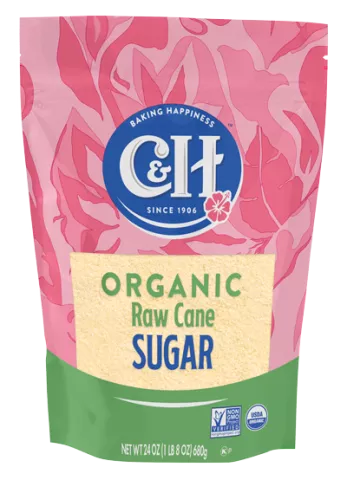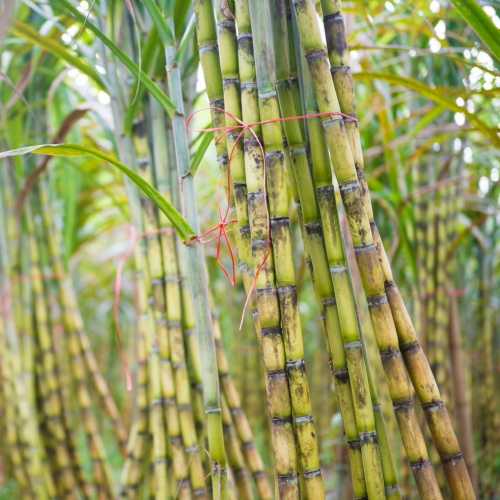Cane Sugar Processing: Standard Techniques and Modern Innovations
Cane Sugar Processing: Standard Techniques and Modern Innovations
Blog Article
Understanding the Crucial Methods and Technologies Utilized in Modern Cane Sugar Handling
The development of walking cane sugar processing has been considerably formed by the integration of sophisticated strategies and innovations that attend to both efficiency and sustainability. Enzyme-assisted extraction and advanced refining approaches have revolutionized yield optimization, while automation facilitates operational dependability. In addition, the emphasis on sustainable methods reflects a growing understanding of ecological influence. As we explore these essential developments, it comes to be important to check out how they not only improve production yet also align with wider sector trends and customer demands, elevating questions regarding the future of sugar handling and its ramifications for global markets.
Historical Context of Walking Cane Sugar Handling
The historic context of cane sugar handling discloses a rich tapestry of farming development and social exchange that has formed its development over centuries. The procedure of extracting and fine-tuning sugar acquired energy in India, where methods for formation were improved around the 6th century.

Advanced Extraction Methods
Efficiency in walking cane sugar removal has seen considerable advancements, driven by the requirement for greater returns and lower manufacturing costs. This method not just increases sugar yield however also decreases the energy needed for handling.
Furthermore, the adoption of membrane purification modern technologies, such as nanofiltration and reverse osmosis, has actually changed the separation of sugar from impurities. These methods permit the careful permeation of sugar molecules while maintaining larger contaminants, simplifying the extraction process and minimizing waste.
Moreover, the integration of continuous extraction systems has actually brought about boosted functional effectiveness. Cane Sugar Processing. These systems maintain a constant circulation of walking cane material, making sure ideal extraction problems and minimizing downtime related to batch processing
Innovative Refining Technologies
Refining techniques in walking cane sugar handling have undertaken a transformative shift, driven by the demand for greater purity and improved item high quality. Among the most notable advancements is the adoption of membrane layer filtration modern technologies, such as ultrafiltration and nanofiltration. These processes properly eliminate impurities and colorants without the demand for substantial chemical treatments, consequently protecting the sugar's all-natural taste and improving its appeal.
One more substantial improvement is the use of ion exchange resins, which permit selective elimination of unwanted ions from sugar solutions. This technology not just boosts the general pureness of the final item but additionally adds to minimized waste and environmental influence.
Additionally, improvements in adsorption methods, using triggered carbon and various other sophisticated products, have actually confirmed reliable in decolorizing sugar solutions while keeping optimal quality. The combination of these ingenious refining technologies guarantees that makers can generate polished sugar with superior clarity and taste, satisfying the advancing preferences of customers.
Automation and Control Solution
Current advancements in refining technologies have paved the method for considerable enhancements in automation and control systems within walking stick sugar handling centers. These systems make use of innovative software application and equipment to enhance operational effectiveness, decrease human mistake, and make sure regular product high quality.
Modern automation incorporates numerous elements, consisting of sensors, actuators, and programmable logic controllers (PLCs), allowing real-time surveillance and control of important procedures. As an example, pressure, temperature, and flow rates can be precisely regulated during removal, explanation, and crystallization phases, enhancing efficiency and decreasing waste.
Additionally, progressed data go right here analytics and device discovering formulas play a crucial role in anticipating maintenance, permitting operators to prepare for equipment failings before they take place. This positive approach not just decreases downtime but also extends the life-span of equipment.
Furthermore, automation promotes the application of Sector 4.0 principles, equipping sugar mills to accomplish greater connectivity and information exchange throughout procedures. Consequently, decision-making comes to be even more nimble and educated, eventually improving the total competitiveness of walking stick sugar production. With these innovations, the industry is well-positioned to satisfy expanding worldwide needs while maintaining operational quality.
Sustainability Practices in Sugar Production
Sustainability techniques in sugar manufacturing have come to be increasingly crucial as the market looks for to stabilize economic practicality with ecological responsibility. As consumer understanding expands relating to the ecological impacts of farming practices, sugar producers are taking on ingenious approaches to decrease their eco-friendly footprint.
One significant strategy is the application of precision farming More Bonuses strategies, which use information analytics to enhance source usage, such as water and plant foods. This lowers waste and minimizes the effect on local ecosystems. Furthermore, many manufacturers are transitioning to renewable resource sources, such as biomass from sugarcane by-products, to power their procedures, thus lowering dependence on nonrenewable fuel sources.
Water administration techniques are likewise essential; rain harvesting and efficient irrigation systems aid alleviate water deficiency issues. Cane Sugar Processing. Furthermore, integrated pest administration techniques lower chemical use, promoting biodiversity and dirt health and wellness
Corporate social responsibility efforts are arising, with companies purchasing local areas and making sure reasonable labor techniques. By welcoming these sustainability methods, the sugar market not just improves its track record but also adds to a much more lasting agricultural landscape, paving the means for future generations.

Conclusion
In recap, modern cane sugar processing incorporates a series of innovative methods and modern technologies that significantly boost sustainability, return, and effectiveness. The adoption of innovative removal and refining techniques, together with automation and control systems, facilitates enhanced functional efficiency and product quality. Moreover, the focus on sustainable methods highlights a commitment to minimizing ecological impact and advertising ethical manufacturing. Jointly, these innovations place the walking cane sugar industry to meet modern needs while attending to crucial global challenges.
The evolution of walking cane sugar processing has been dramatically shaped by the integration of innovative strategies and technologies that resolve both effectiveness and sustainability.The historic context of walking stick sugar handling reveals a rich tapestry of farming technology and social exchange that has shaped its growth over centuries. Technologies in milling and refining arised, laying the foundation for modern-day moved here walking stick sugar handling.Refining strategies in walking stick sugar handling have undertaken a transformative shift, driven by the demand for higher purity and enhanced item top quality.In recap, modern-day walking stick sugar handling integrates an array of advanced methods and innovations that dramatically improve sustainability, effectiveness, and return.
Report this page